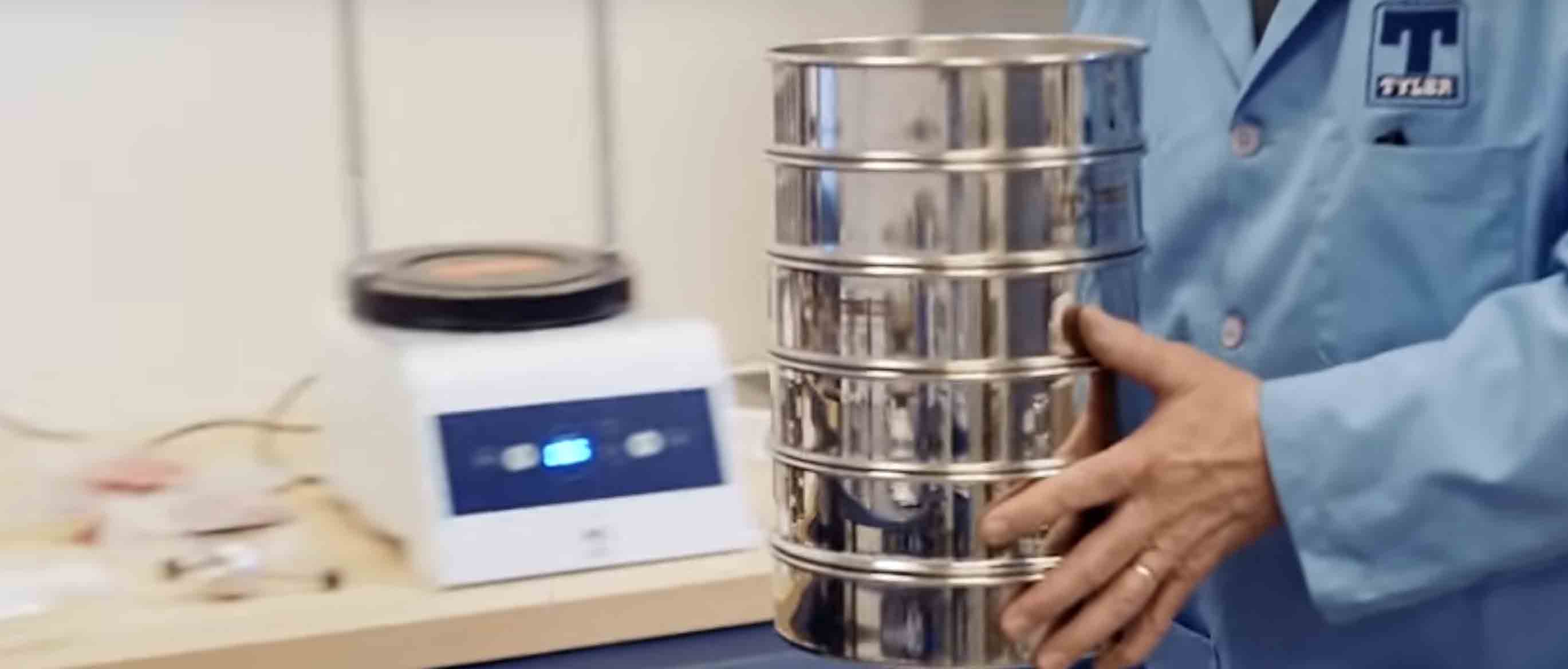How To Collect Sieve Analysis Data (Process, Analyzing, and Tips)
Particle size analysis plays a key role in the success of countless industries. From pharmaceutical drugs to the roads and sidewalks that facilitate our daily commutes, particle size analysis is what makes the world go round.
Test sieve analysis in particular, is only beneficial if accurate and optimal results are achieved. Lab technicians must be sure to employ best practices and avoid common errors to ensure an efficient and effective production line.
Having been pioneers of the particle size analysis industry for over 140 years, W.S. Tyler is here to ensure you yield accurate and repeatable results.
With that, this article will establish what particle analysis results are, how to gather reliable results, what information can be depicted from accurate lab results, what common errors affect data analysis, and how inaccurate results affect your end product.
What Exactly Are Test Sieve Analysis Results?
When you hear the term test sieve analysis results, it is referring to the distribution of particles in a given sample. This can be interpreted by analyzing the retention of particles throughout a sieve stack or the amount of material that passes through each sieve.
You can also analyze the cumulative material retained or cumulative material passthrough, though these results tend to become more linear.
That said, analyzing the retention of particles is possibly the most popular way to analyze particle analysis results, as it yields a bell-shaped distribution curve. In the world of particle analysis, a distribution curve is used as a graphical representation of the data that is recorded.
What Does the Process of Gathering Results Properly Look Like?
Gathering accurate particle analysis results starts with determining the amount of material on each sieve, also referred to as each cut. So, for example, let’s say you start with 100 grams of sample material.

Typically, the first test sieve in the stack will have no material, as it mainly serves as a scalping sieve that removes any foreign debris.
You then calculate that the second sieve has 2 grams of material (2%) and the third sieve has 20 grams of material (20%). You are now looking at 22 grams, or 22%, of material, accounted for.
You keep going down the sieve stack until you get to the pan. The material in the pan is then subtracted from everything retained within the sieve stack.
If there are 2 grams of sample material in the pan, there are 98 grams of material retained on the sieves.
What Information Can Be Obtained From Test Sieve Analysis Results?
Once you have determined what each of the cuts are on a percentage basis, you then establish what data you want to get out of the test. This is where you must look at the desired cutpoint.
So, let’s say your cutpoint is a 35 sieve. 80% of your sample material should be +35, which allows 20% of your sample to be -35.
Once you determine what each cut is, you can also pin point the location of the median particle size. In other words, on what sieve is 50% of your material +/-.
Another thing that can be determined through particle analysis results is how fragile your material is. As test sieve analysis is a mechanical process, it can prove to be fairly abrasive.
If your material has a lot of facets (angles and points), they are likely going to break off when moving through the sieve stack. This access material will end up in your minus pan, allowing you to determine how much of your material is breaking down.
What Common Errors Affect Data Analysis?
One of the most common errors seen in particle analysis labs is the tendency to not use enough sieves in a sieve stack. This causes your distribution curve to be less smooth and overall less consistent.
Putting this into perspective, using a 4-sieve operation is likely to yield a distribution curve with multiple plateaus and other inconsistencies. On the other hand, a 7-sieve operation is likely to plot a smoother curve that gives you a better idea of the quality of your material.
Another major mistake that is seen in labs is the improper cleaning of test sieves between runs. Failure to clean your sieves may lead to material leftover from previous testing to be accounted for in future runs, skewing your results.
Now, sometimes material can get lodged in the test sieve mesh to a point where it's too hard to remove. In these instances, you need to weigh each sieve individually with the retained material in it.
After you get your percentages, dump your material out and weigh each sieve when it's empty. Subtracting the empty sieve weight from the weight of the sieve with the retained material in it will allow you to account for plugged material on the next run(s).
How Can Inaccurate Results Affect the Final Product?
There are two reasons why manufacturers conduct particle size analysis: production control and quality control. That said, gathering results that are accurate is vital to both.
Particle analysis is vital to production control because it dictates what changes need to be made to the manufacturing line as products are being produced. Inaccurate particle analysis results will cause manufacturers to make inadequate changes to the production line.
In terms of quality control, bad particle size analysis results may lead to the manufacturers sending inconsistent products to the customer. This leads to further issues as customers often check the quality of a product on their end.
When the customer yields bad particle analysis results on their end, the manufacturer often has to sell the product at a substantial discount or the customer sends the product back.
Improve Your Production Line With Accurate Particle Analysis Results
Particle size analysis results are a direct reflection of the particle distribution in a given sample. That said, yielding accurate results is vital to supporting the production control and quality assurance of any manufacturing operation.
But before you can begin any particle size analysis and yield accurate results, you must first obtain a reliable representative sample. With 140 years of particle size analysis experience, W.S. Tyler is here to help optimize your particle analysis process from beginning to end.
To learn how to properly obtain a representative sample, refer to our article: How to Prepare a Sample for Particle Size Testing (Splitters & Quartering).
About Ronnie Brown
Ronnie is the Content Writer for W.S. Tyler and has four years of experience as a professional writer. He strives to expand his knowledge on all things particle analysis and woven wire mesh to leverage his exceptional writing and graphic design skills, creating a one-of-a-kind experience for customers.




